FOOD: Bigger than the Plate will lead you on a true expedition, traversing four key areas of the process: Compost, Farming, Trading and Eating. Each step is vibrant and bursting with its own mini exhibits, featuring artists from all over the globe.
To start: “Compost”. Dedicated to championing the sustainability cause, the theme is set for the entire exhibition, transforming the showcase from an ordinary V&A gallery room into a science-fiction fair.
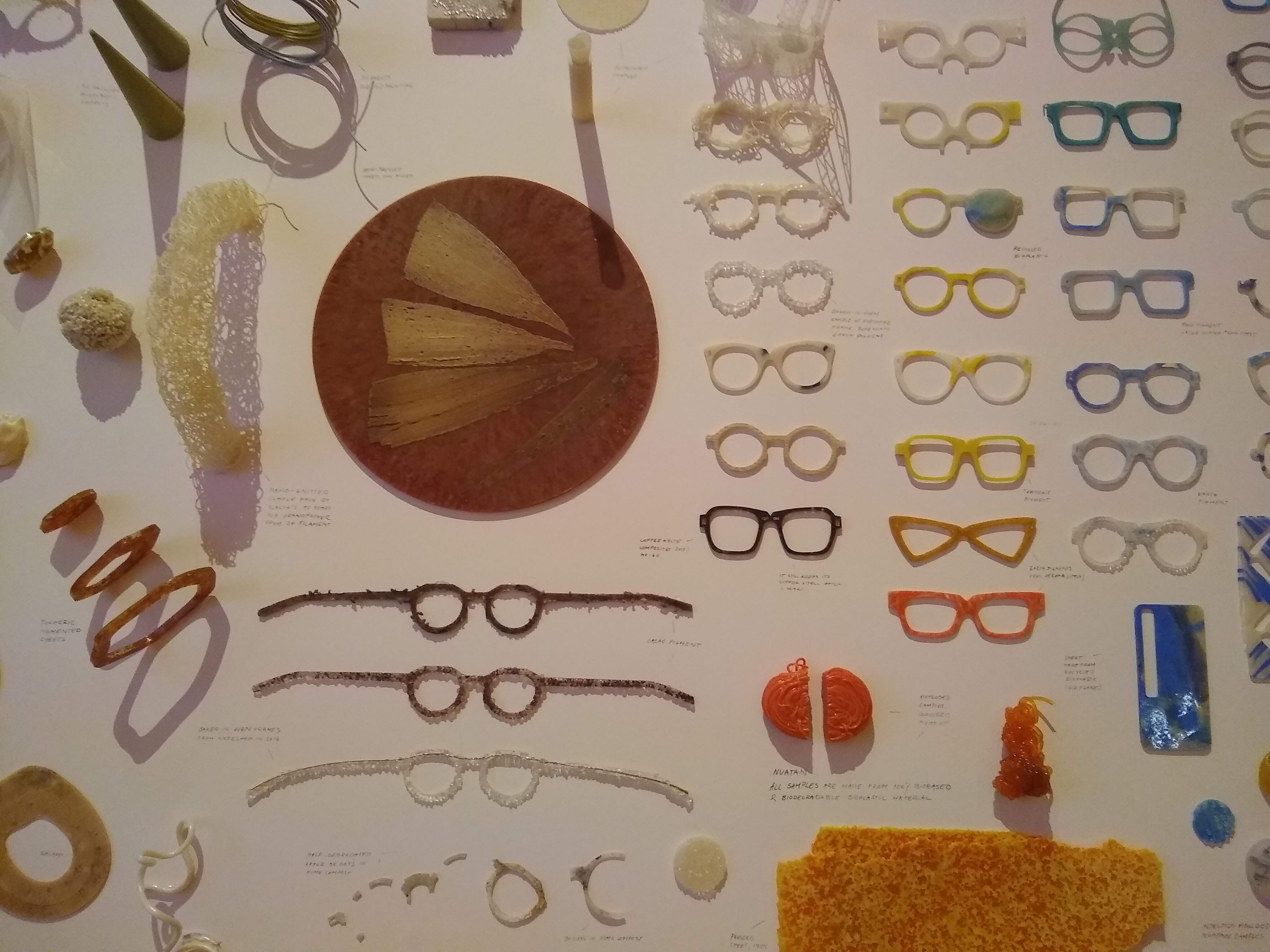 Bags of coffee grounds, mushrooms exploding from their sides, hung from the ceiling - illustrating how everyday waste has the potential to take on a different life in the efforts of conservation. A variety of sunglasses made from a compilation of composted materials covered one wall, striking in shades of vermillion, sapphire and hickory. As tactile objects illustrating a somewhat theoretical point, these items were touchable and visitors are encouraged to run their fingers over the innovative new composted materials. Some reminded me of obscure substances from Minecraft; others like they’d been discovered on Mars.
Bags of coffee grounds, mushrooms exploding from their sides, hung from the ceiling - illustrating how everyday waste has the potential to take on a different life in the efforts of conservation. A variety of sunglasses made from a compilation of composted materials covered one wall, striking in shades of vermillion, sapphire and hickory. As tactile objects illustrating a somewhat theoretical point, these items were touchable and visitors are encouraged to run their fingers over the innovative new composted materials. Some reminded me of obscure substances from Minecraft; others like they’d been discovered on Mars.
Clearly this exhibition aims to prove that food is a sensory experience: one that encompasses all of our senses, not just taste. Once more, visitors were coaxed to touch different materials, listen to clips of international environmental stories, smell freshly made lemonade and get lost and dizzy in the vibrancy of the Fallen Fruit wallpaper.
Onto “Farming”: a comment on perceptions surrounding the agricultural sector. This exhibit took the image of clunky tractors ceaselessly ploughing fields and transformed it into something relatable and current. I recognised the universalism of farming, its roots in the agricultural revolution here in the UK, and its critical worth in our world today.
Visitors witnessed a new type of plough (reminiscent as a contraption from Thunderbirds) and were invited to appreciate the need for ground-breaking technology in this sector which can often feel behind-the-times.
Next up! “Trading”, and worryingly a lack of effort towards environmentalism. I felt this section was the sole drawback of the exhibition. The former two segments seemed to create an urgency surrounding the topical issues of sustainability and ‘green’ activities, which this third facet simply dismissed.
Whilst comments were made on the industrialisation of animals, it felt as though more could have been done to prove the destructive impact of the meat industry on our planet. Instead, visitors witnessed a photographic exhibit showing the growth of a cow from birth to slaughter, with its leather being exhibited in high-fashion products.
It felt as though the V&A, as a high-profile museum, had a crucial opportunity to take a stand against the status quo of the food industry and advocate the environmental benefits of vegetarianism and veganism, but this was sadly squandered. To me it was a perverse and medieval principle to highlight animal suffering for human fulfillment and, to me, contradicted the otherwise positive moral values highlighted throughout the rest of the exhibition.
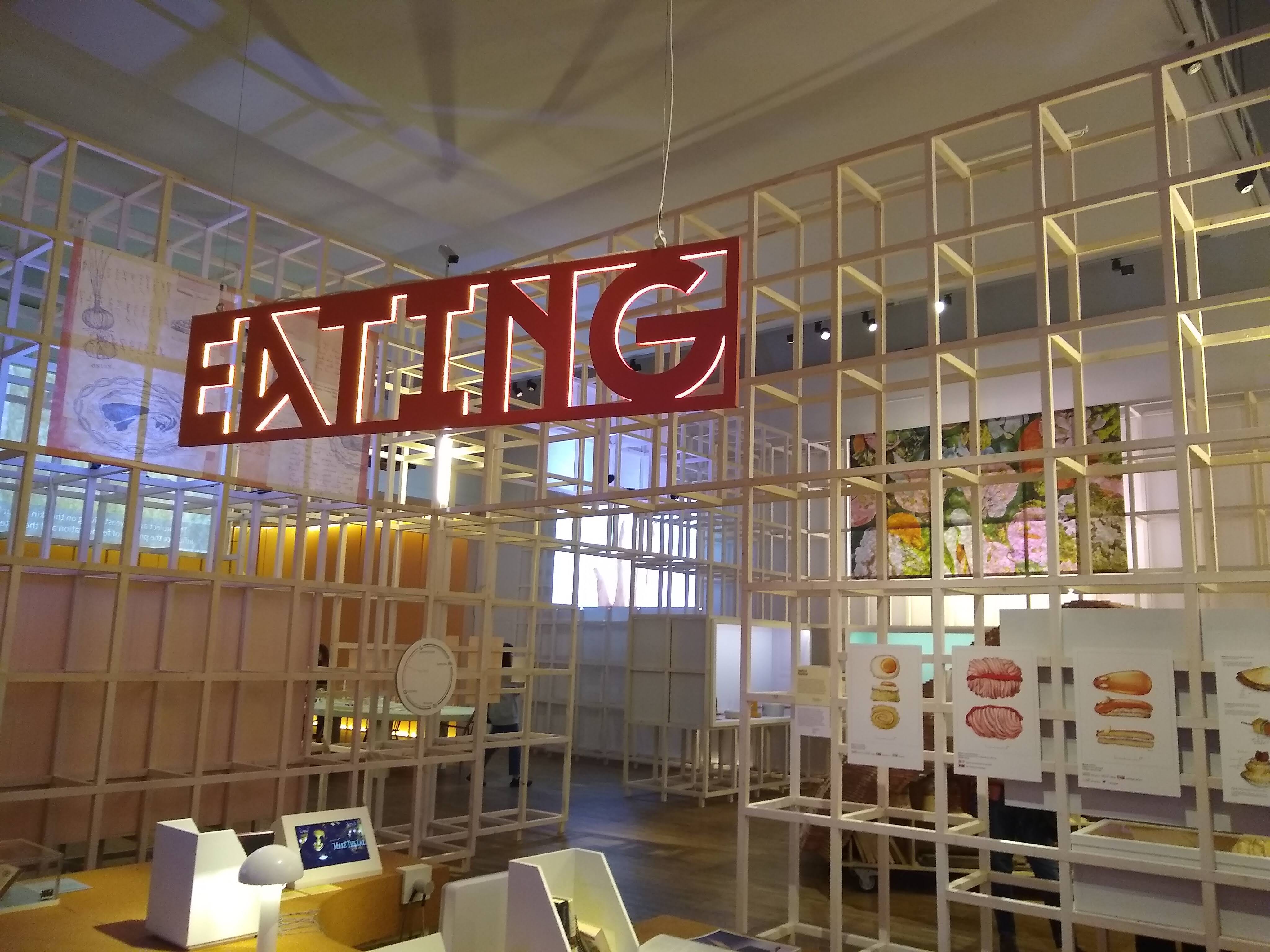 Moving on from the lack of environmentalist values in “Trading”, the concluding “Eating” segment managed to bring the exhibition to a delicious conclusion, for all the senses.
Moving on from the lack of environmentalist values in “Trading”, the concluding “Eating” segment managed to bring the exhibition to a delicious conclusion, for all the senses.
Sitting around an ergonomic cork table, we read cookbooks from the 1950s and listened to audio clips of chefs discussing their favourite meals. In direct juxtaposition, screens mounted on an opposite wall scrolled through foodie Instagram feeds, illustrating how our culture has morphed the value of food into a visual experience curated by the individual and serving a virtual purpose.
The last course ‘Eating', set in a contemporary banqueting hall, revealed the magnum opus of the exhibition: infinitesimal food portions. Served by a waitress behind a bar, visitors are able to place orders on a screen and wait for their tiny take-way to be made right in front of them. Complete with tweasers, this last experience for your taste buds drew the exhibition to a close, with smiles on everyone’s faces.
Leading you on a journey, mapped out with clarity and substance, this experience allows you to explore and reimagine your senses. For an hour it seemed I was transported from central London to an alternate neon reality, with solutions to globalisation, food poverty, and upcycling the contents of your compost bin into something sparkly to wear on your night out.
FOOD was co-curated for the V&A by Catherine Flood and May Rosenthal Sloan, and is open for visiting until October 20th 2019.

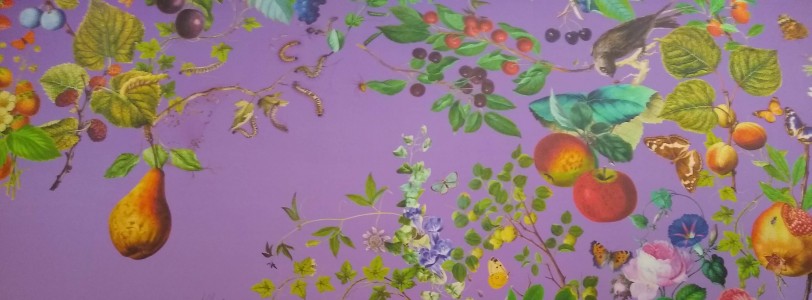
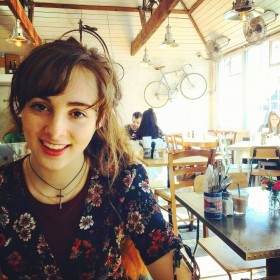
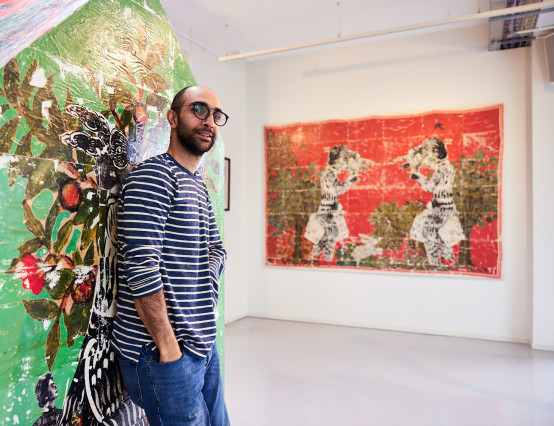
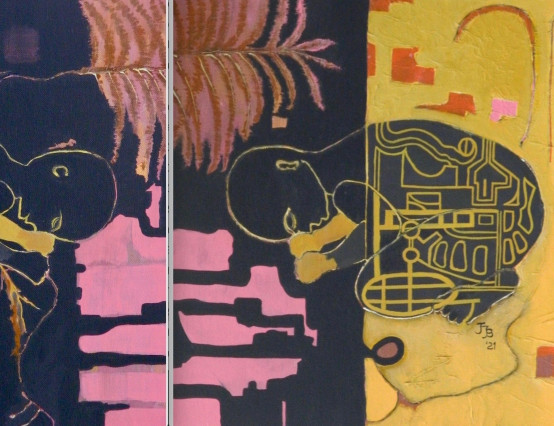


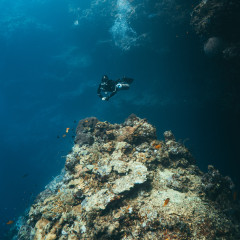
0 Comments